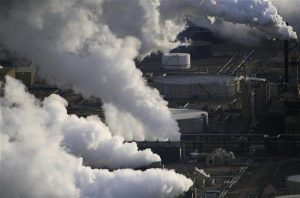This month, the UN secretary general will host a major climate summit: it is a moment in time for heads of state, cities, organisations, and companies to announce bold new initiatives to address climate change in the short to medium term.
It is also a moment for an ambitious, scientifically credible and clear vision on where the world needs to aim over the long haul. Bold initiatives are certainly needed now to slow the growth of emissions before 2020, peak global emissions shortly thereafter and rapidly put in place policies capable of delivering clean and resilient development.
Yet, like a young person planning their career, a mayor looking at future demographics or a corporation evolving a business strategy, there also needs to be a long term view of where we want to be fifty years or so down the road. That long term vision is ‘climate neutrality’ – i.e. not putting in more greenhouse gases into the atmosphere than natural processes take out – as soon as possible in the second half of the century.
There is ample evidence from the UN’s climate science panel that global greenhouse gas emissions have to be zero or near zero by the end of the 21st century if we want to achieve the goal of holding a global temperature rise below 2C. It is the best guarantee of ensuring that the poor and vulnerable are spared from ever more threatening impacts such as heat waves, crop failures, floods and water shortages that will increasingly threaten their lives and livelihoods; continued, unabated emissions pose an unacceptable risk of pushing our climate system toward potentially irreversible changes with highly damaging impacts to all sectors of society.
Let us be clear. Climate neutrality is not nirvana or an alternative universe – it is about dramatically reducing current emissions to the point where we reach a balance between those emissions entering the atmosphere and the capacity of the Earth to absorb them. This will require charting the path from the high emission society we have today —including initially through some level of certified carbon offsets – to a deep, decarbonisation of the global economy before arriving finally at a climate neutral family of nations.
It also demands a rapid transformation in the way we value healthy ecosystems to ensure that nature will continue to play an ever more central role in removing carbon from the atmosphere. This will require significant investments in cleaner, greener energy and energy efficiency in transport and buildings alongside smarter management to sustain, expand and restore forests and soils.
Overall this will be a much less costly economic development path for the entire planet, preventing potentially enormous costs connected with climate change impacts; it will also be good for jobs with many emerging in constructing green buildings, low energy transportation systems and other climate-friendly infrastructure and natural resource management. The effort is undoubtedly long term and ambitious but must be seen as the eventual target so that decisions taken now are taken with the long game in mind.
Climate neutrality may seem like a tall order in 2014 with global emissions still climbing despite the growing penetration of renewable energy, improved energy efficiency in many countries and actions to sustainably manage natural assets like forests. But some countries have already glimpsed the long term and are pointing their economies in that direction: from Bhutan and Costa Rica to Papua New Guinea, Sweden and Switzerland.
Many cities affiliated with associations like ICLEI and the C40 are pledging ambitious long term targets some of which call for 80%, 90% and even 100% emission reductions. These pioneering urban centres range from Copenhagen and Stockholm to Oslo and Seattle. Visionary companies, many of them household names in the internet, high tech and banking sectors, are following suit. Ban Ki-moon’s summit on 23 September is about raising ambition en route to the UN climate talks meeting in Peru this December and in advance of a crucial conference in Paris at the end of 2015.
Countries have agreed to ink a new agreement in Paris that can mark a turning point towards bending down the current greenhouse emissions curve and assisting the poor and vulnerable to better adapt to the climate change already underway. But as the science spells out, this is not the end game if poverty is to be truly eradicated and our collective goal of a safe and secure world is to be realised.
Only a long term vision of climate neutrality in the second half of the century can do that and in doing so provide a real and exciting prospect for more than nine billion people of a functioning, fit and healthy world for generations to come.
This piece was first published by the Guardian and is republished here as part of the Guardian Environment Network.







